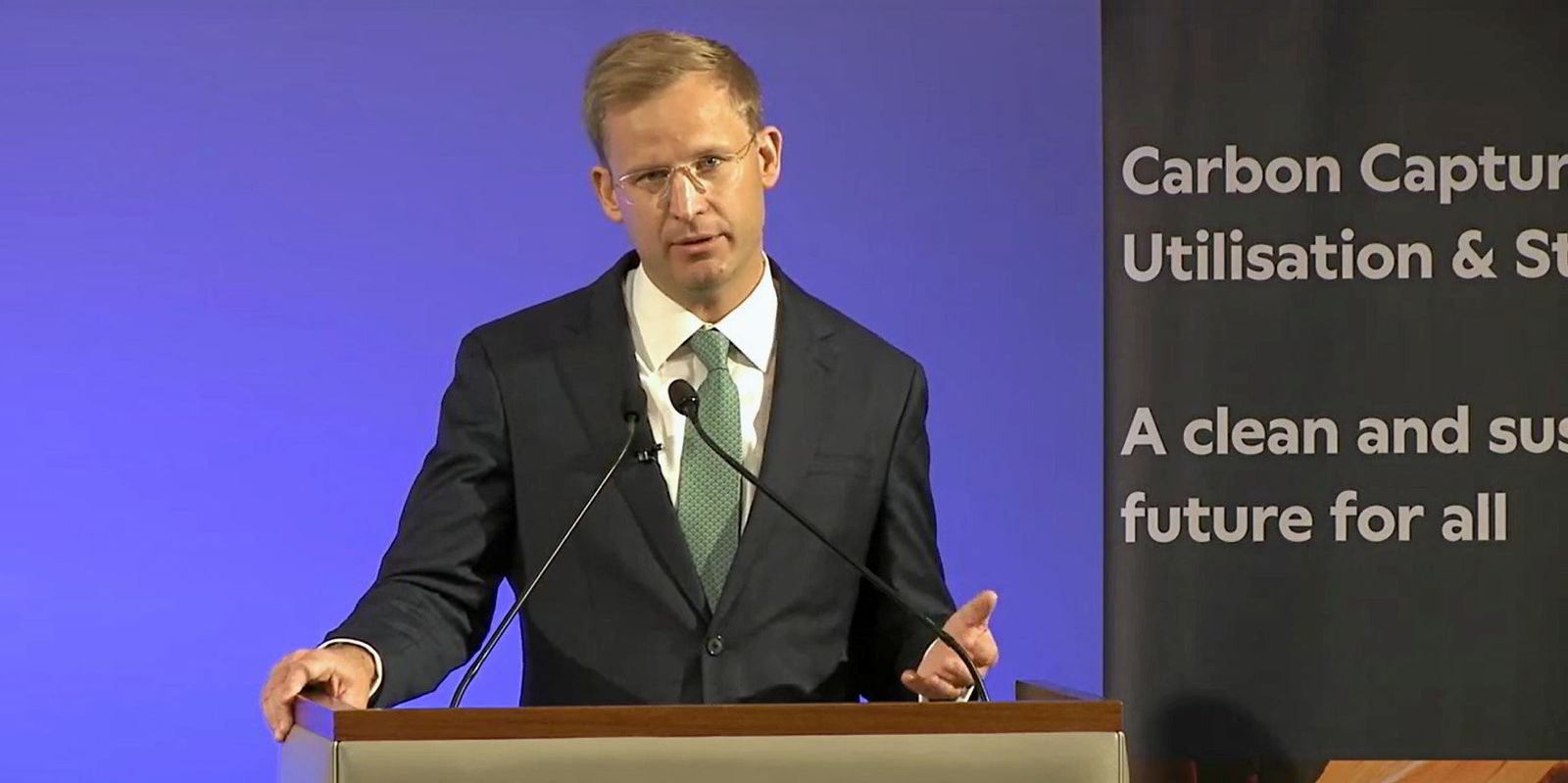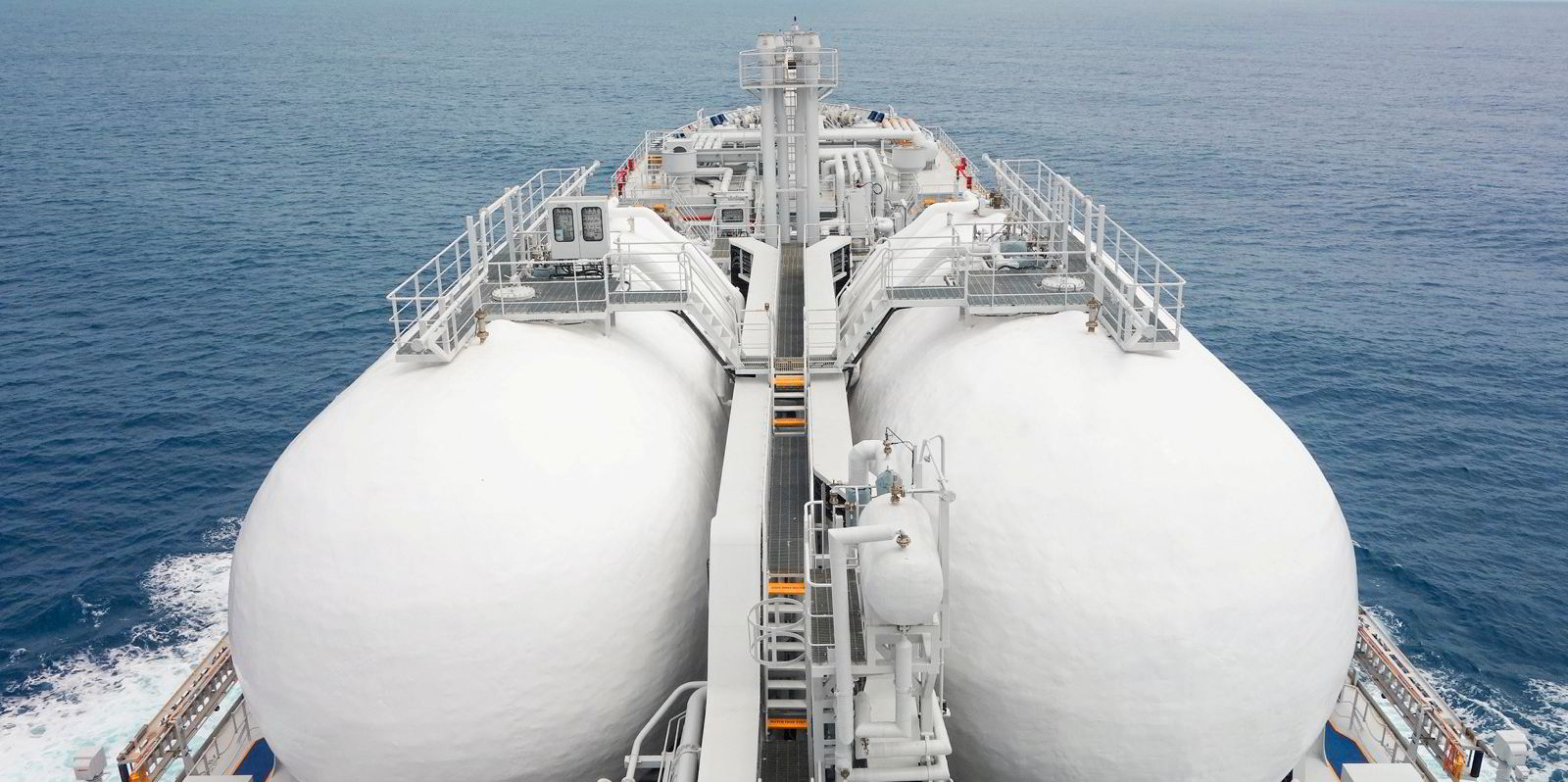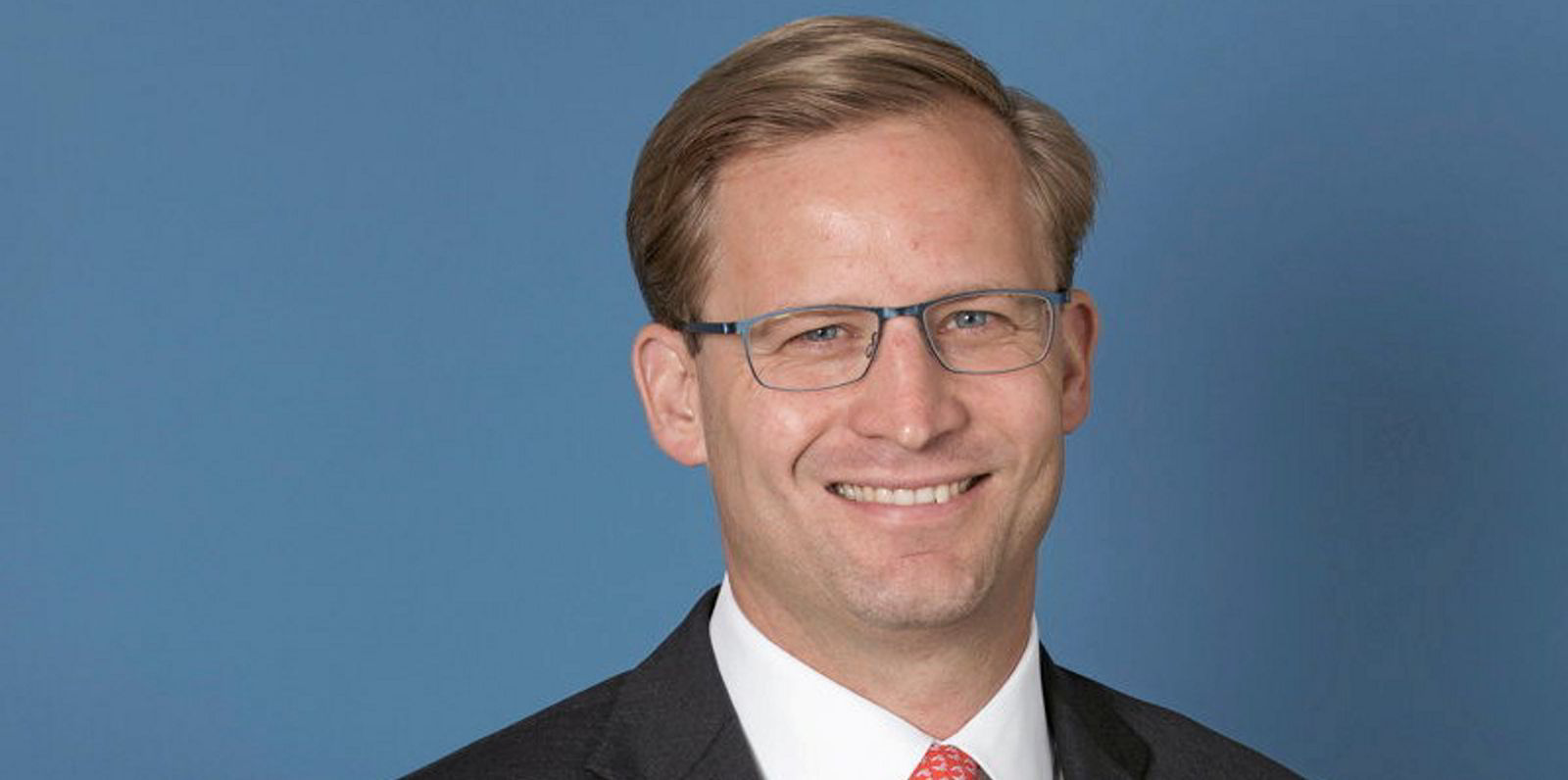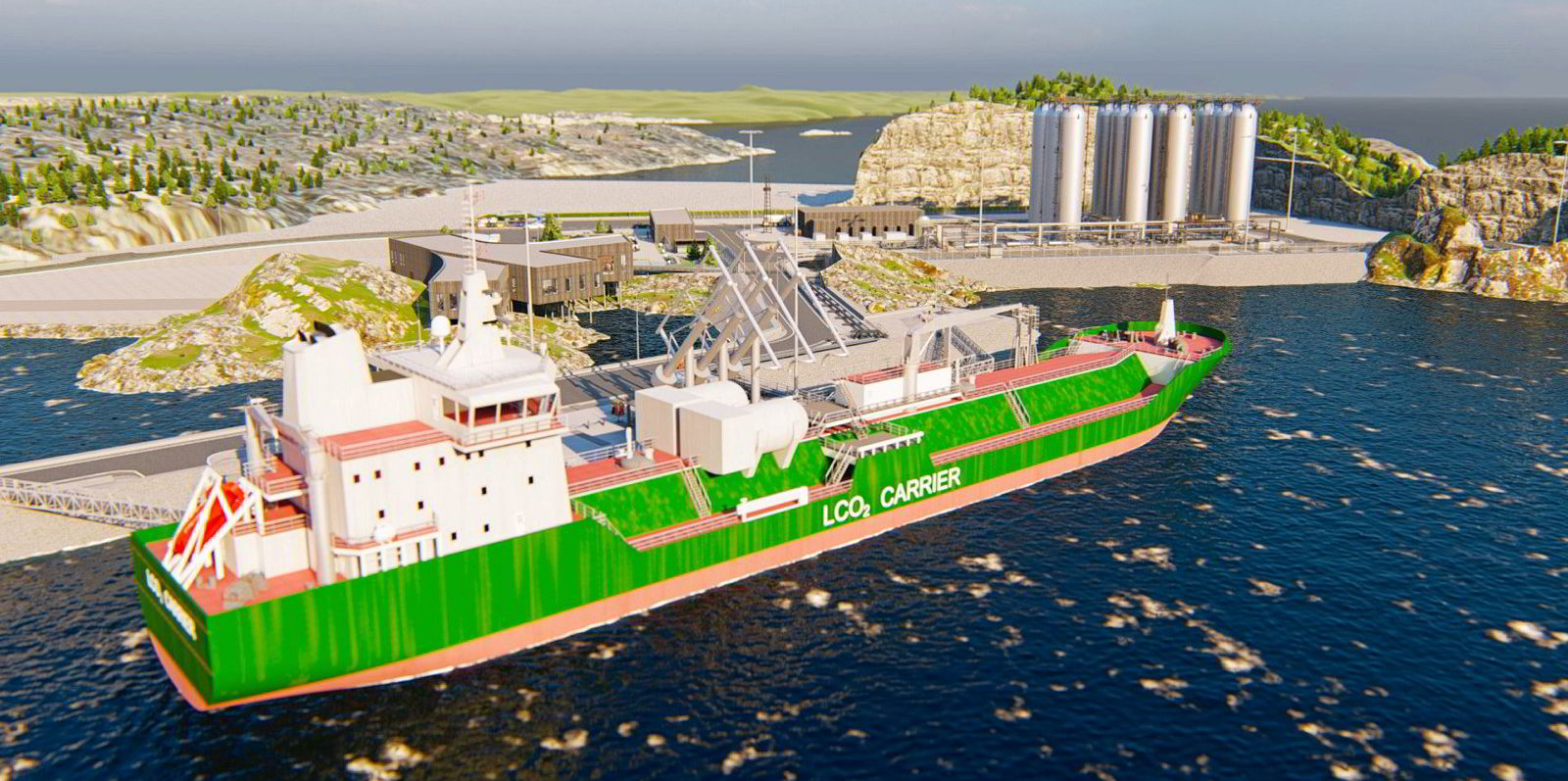Regulatory hurdles are blocking the development of cross-border shipments of liquefied CO2 and the scaling up of the emerging carbon capture, storage and utilisation (CCUS) sector.
Jasper Heikens, who is chief commercial officer for Greek shipowner Peter Livanos’ fledgling LCO2 carrier and terminal venture EcoLog, said emitters need choice and scale to store CO2 to bring the cost down and accelerate the scale of decarbonisation.
“Shipping by its very nature is cross-border. We now have policy in the way preventing the free movement of CO2,” he said at the CCUS 2022: Time to Deliver conference in London.
“We need a one atmosphere one rule approach to the CO2 market,” he added.
Heikens said the industry is “largely there” with all the different elements — shipping, liquefaction, temporary storage and underground injection — widely understood. But policy is lagging behind and slowing down some of the developments.
He said the industry is now starting to see cross-national agreements, which is “helpful but a very slow and tedious process”.
At the heart of the issue is the incoming European Union Emissions Trading System (EU ETS), under which an emitter of CO2 can only class its emissions as “not emitted” if its CO2 is stored underground following the CCS Directive. This in turn states this needs to be at sites within the European Economic Area.
Heikens said: “The EU ETS article 12.3(a) needs to be amended to accept equivalent storage outside of the EU.”
He has revealed that the Greek government, working with EcoLog, pushed to have this included in the last round of ETS amendments but it was slightly late in the process and ultimately not accepted.
He said another effort is being made through the EU triologues — the meetings of the European Commission, European Parliament and member states — where there is a precedent, albeit rare, to add new amendments to policy.
Heikens said there are future opportunities to make the amendments.
“We need to find a policy window to get this changed as soon as possible. This should be an easy win,” he said.
EcoLog has an interest.
Livanos’ new venture, which was quietly rolled out this year, wants to enter and build up the LCO2 shipping and terminals sector. The company has ambitions to be capable of shipping 5m tonnes of CO2 by 2027 to 2028 using low pressure LCO2 carriers of 20,000 cbm but also up to 85,000 cbm.
Offshore storage sites in the UK and land-based or US Gulf ones in America offer tempting prospects for the nascent carbon capture and storage (CCS) industry.
EcoLog is arguing that if the EU amended its policy to accept non-EEA sites then the body could look at each option on a country-by-country basis. The UK, the company argues, could be a particularly easy win as its policy was drawn up while the country was within the EU and so is very similar.
So how big could the CCS and CCUS sector become?
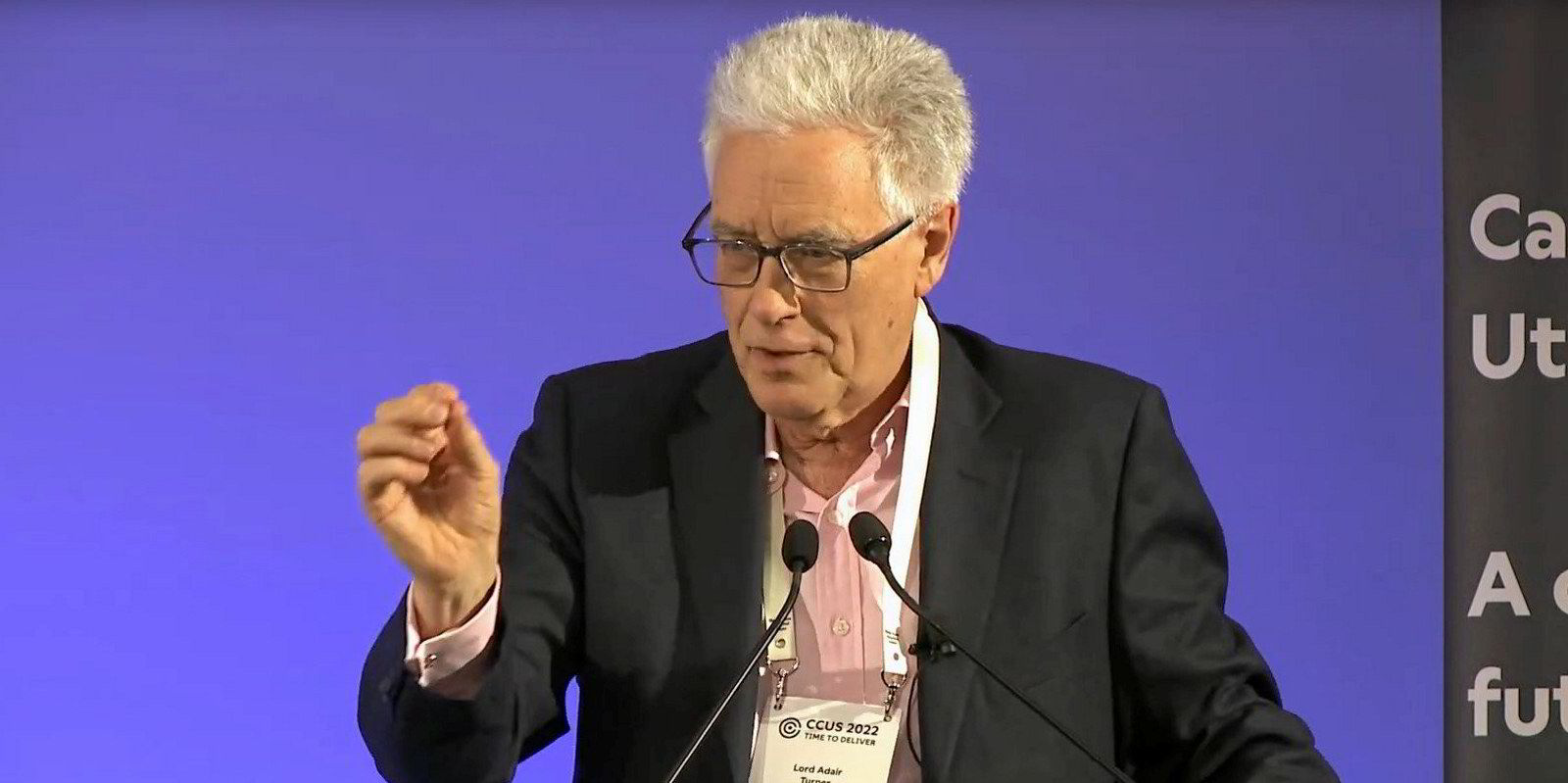
At the same conference, Adair Turner, who is chair of the Energy Transitions Commission coalition of 50 companies, described the role of CCS as “vital but limited”, making up around 10% to 15% of elements required to reach net zero by 2050.
Turner said storage can be permanent if well managed. But he said currently there are insufficient new CCS facilities being built at the rate needed to even reach the limited role that it will play.
EC policy officer for low carbon solutions Daniel Kitscha said that by 2050 the EU would need to industrially capture between 300m and 550m tonnes per annum of CO2 and provide geological storage for 300 million tonnes per annum.
He said the commission sees a need for the ramping up of the sector, putting infrastructure in place to handle it and the cross-border transport of CO2.
Dan Fletcher, who is head of global CCUS portfolio at BP, said such global European projects are running ahead, highlighting the Northern Lights development. But he acknowledged that the current cross-border regulations are complex.
Fletcher said BP is fielding many questions from its customers about trans-border movements of CO2 and highlighted a need for the EU to open up to international storage.
Kitscha said the crucial thing in this decade is to show that CCS works.
He said there are EU Innovation Fund projects approaching financial closure looking to store a total of 4.6m tonnes of CO2 by 2028 and 2029 that are struggling to find storage options and would welcome more offers.
Are regulatory amendments one of the answers?
